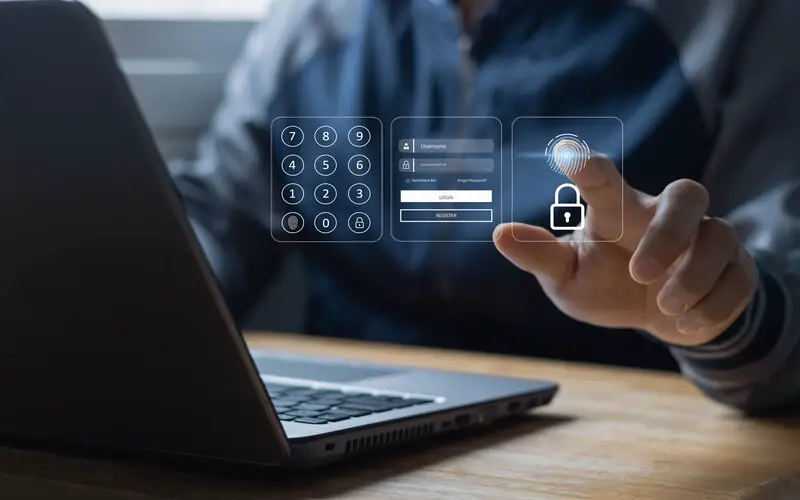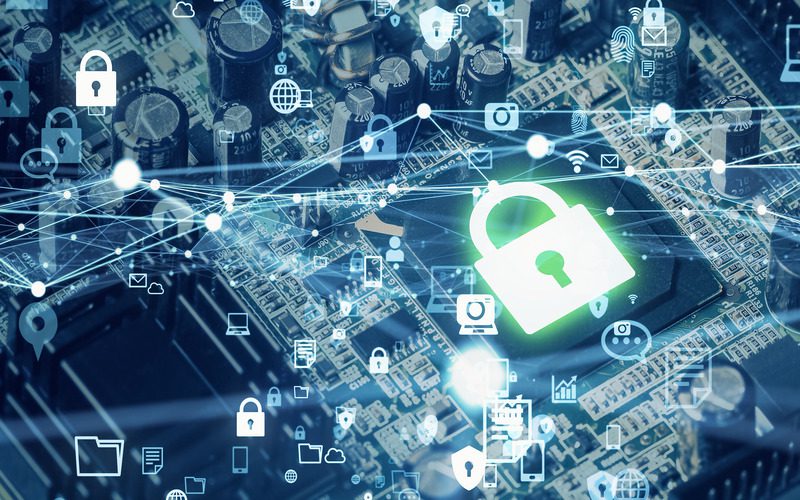A complex and diverse IT environment fosters innovation and growth but also considerably expands an organization’s attack surface, attracting cybercriminals. The more endpoints a company adds to its infrastructure, the more resources it needs to keep its environment safe. This means investing heavily in numerous security products and, with any luck, finding security experts to manage it all.
For small and midsize businesses (SMBs), building an in-house security team can be expensive and time-consuming, distracting them from their core business. Managed detection and response (MDR) service providers give security- and cost-conscious SMBs top-notch threat detection and remediation service that is nearly impossible to build internally. Even MSPs who want to highlight security in their portfolio can partner with an MDR service provider.
With rising cybercrime, partnering with an MDR service provider can be a game changer. Let’s understand how the service works and its benefits.
What is managed detection and response (MDR)?
MDR is a high-tech cybersecurity service that can radically improve an organization’s security posture by taking on advanced cyberthreats and eliminating them for good. It’s an outsourced service, generally run out of a security operations center (SOC), that gives SMBs the power and resources of an internal security team that only large corporations can afford.
MDR service providers have intimate knowledge of tools and techniques used by cybercriminals and how they operate. Armed with this information, MDR specialists actively hunt, disrupt, contain, analyze and mitigate threats systematically before they can take hold of their client’s organization. MDR experts’ tool stack includes everything from firewall, antivirus and antimalware programs to advanced intrusion detection, encryption, and authentication and authorization solutions.
Besides stopping advanced threats, MDR experts also analyze the root cause of an intrusion to prevent it from happening again. They also make actionable recommendations that help their clients enhance organizational security and get a better ROI on their security investments.
Who needs MDR?
Many SMBs and MSPs cannot afford the high cost of building a security team in-house, which requires heavy upfront investments in specialized tools and trained personnel. SMBs are often targets of ransomware, phishing, Denial-of-Service (DoS) and other crippling threats since their security setups are simple and easy to breach. About 52% of SMBs experienced a cyberattack in the last year and 10% have experienced more than 10 cyberattacks. The worst part is that cybercrime costs SMBs over $2.2 million annually. MSPs are not safe either. As well as being vulnerable to ransomware attacks, MSPs can also become a node in supply chain attacks. Due to this, SMBs and MSPs are becoming increasingly security conscious and seek out third-party vendors who can provide them and their clients with top-of-the-line security cover.
MDR is a game changer for any organization that wants to strengthen its cybersecurity posture but does not have the resources and skills to assemble an in-house team. MDR service providers pair the know-how of expert security specialists with cutting-edge tools to provide their clients with a rock-solid defense strategy at an affordable price. By partnering with an MDR service provider, SMBs get 24/7 monitoring, threat detection and hunting, incident response and management, behavioral analytics and even compliance management without spending hours worrying about it. Instead, they gain a competitive edge and can focus on growing and scaling their business.
MSPs have lots to gain too. By partnering with an MDR service provider, MSPs can bypass investing in expensive security tools and finding security experts who are as rare as hen’s teeth. At a time when cybersecurity is everyone’s top priority, having an advanced threat detection and prevention service on their menu will not only prove to be lucrative but also boost their brand value.
What is the advantage of MDR?
Cyberthreats today are complex and known for their stealth and ability to penetrate even the most formidable defenses. Aside from this, threat actors are taking advantage of artificial intelligence (AI) tools like ChatGPT to design more convincing social engineering schemes, like phishing emails, thus making them even more dangerous. In such an environment, relying solely on conventional security systems like firewalls and antivirus software will not meet the challenge.
MDR services shine where traditional security tools fail. MDR service providers leverage a combination of technology, process and skill to create a multilayered defense that is hard for even the most seasoned cybercriminal to break. They expand the idea of perimeter security to cover all levels of the IT infrastructure, such as network, host, application, operating systems and data monitoring so that if a breach occurs, it can be contained and prevented from spreading laterally. This strategy, dubbed defense-in-depth, has a defensive layer at every level of the infrastructure preventing cybercriminals from executing their plans. The layered approach significantly slows hacker activity, exhausting them, while allowing security experts to respond and contain threats in real time and more effectively.
MDR service providers work proactively. They use advanced threat intelligence and behavioral analysis tools to identify threats that cybercriminals will most likely use to compromise a company’s IT infrastructure. Unlike firewalls and antivirus solutions that use rule-based signatures and patterns to detect known threats, MDR can detect and remediate threats that often slip under the radar. Rather than following predefined rules and systems that can quickly become irrelevant, MDR specialists rely on their judgment, skills and sophisticated toolkit to defeat cybercriminals at their own game.
How does MDR work?
Each company’s MDR strategy will differ based on its infrastructure, risk profile and business needs. Although no universal method exists, the process can generally be divided into three steps:
1. Detection
Timely detection of a cyberattack plays a crucial role in determining a company’s security posture. Even though the dwell time, which refers to the time between a breach taking place and its discovery, has been reduced from over 200 days to 21 days over the years, the challenge and risk it presents remain the same. Organizations often lose valuable time before they spot an intrusion, leading to serious consequences. According to IBM’s Cost of Data Breach Report 2022, it takes an average of 277 days to identify and contain a breach, resulting in a data breach cost of $4.86 million.
MDR service providers, with real-time threat detection and mitigation, reduce a company’s vulnerability to devastating attacks like ransomware by many orders of magnitude. They monitor everything from endpoints to network traffic and log files to cloud environments for anomalies like the presence of malware files, unauthorized access attempts, suspicious privilege escalation and data exfiltration to detect an intrusion as soon as it happens. Using high-end endpoint detection and response (EDR), threat detection, behavioral analytics, machine learning and AI tools coupled with automation capabilities, they successfully spot and eliminate snoops as soon as they cross any perimeter line.
2. Response
Once a threat is detected, MDR experts use a combination of automated rules and human inspection to determine the threat’s scope and severity and whether a ticket is a false positive or the real deal. Organizations receive a flood of security tickets daily and prioritizing them based on severity is a cumbersome task that can lead to alert fatigue. MDR specialists, on the other hand, are experts at triaging and can quickly identify critical tickets that need immediate attention. They then isolate the infected device or network from the rest of the infrastructure to limit the spread of malicious code and gather more information on the threat to determine the best course of action.
3. Remediation
Once the information is gathered, MDR takes the best action to remediate the incident, such as blocking malicious IP addresses or domains, removing malware, cleaning the registry, resetting compromised accounts or removing untrusted apps. The process doesn’t end here. It is imperative to restore the affected device to its pre-attack state to retrieve any lost data and put the endpoint or network to use again.
Once everything is in order, MDR specialists investigate the incident to understand its cause, the attack vector used and why an intrusion was successful. They then set up new automation workflows to address similar vulnerabilities in the future. This further strengthens the IT infrastructure and helps organizations continue operating without hassle.
What is the difference between MDR and other endpoint security solutions?
In this section, we will see how MDR compares with other managed services — the differences and similarities.
MDR vs. EDR
Both MDR and EDR assist companies in gaining visibility into their environments and preventing threats. While MDR is a comprehensive cybersecurity service that companies outsource to a third-party service provider, EDR is a security tool designed to protects endpoints like laptops, servers and mobile devices from cyberattacks. Companies can deploy EDR agents on their endpoints to monitor, gather data and detect malicious activity independently. MDR service providers, on the other hand, do not limit themselves to endpoint protection. They often use EDR solutions along with a range of other tools to detect threats across the infrastructure, including endpoints, cloud, IoT devices, networks or servers.
MDR vs. XDR
Extended detection and response (XDR) builds on the role of an EDR tool. It collects and consolidates data from multiple security tools a company uses, such as EDR, cloud security, network intrusion prevention systems (IPS), user behavioral analytics, network firewall and threat intelligence, to offer better visibility and workflow improvements across the entire security stack. This helps security experts gain a comprehensive and unified view of the company’s security posture and detect threats that individual security products may miss. XDR adds context to alerts to help IT teams and MDR security experts triage and respond to incidents quickly and efficiently.
MDR vs. MSSP
Managed security service providers (MSSPs) are third-party vendors who provide a range of cybersecurity services to their clients and MDR can be one of them. The expertise of MSSPs extends beyond managed detection and response to include incident response, identity and access management, security awareness training, vulnerability scanning, penetration testing, antivirus and firewalls, data loss prevention and more.
MDR vs. SIEM
Security incident event management (SIEM) is a security solution that collects and aggregates data from various sources, such as network devices, servers and security systems, and implements data analytics to detect and identify probable cyberthreats to an IT infrastructure. MDR service providers can make SIEM a part of their toolkit to get alerts about potential cyber incidents and nip them in the bud.
MDR vs. SOC
SOC and MDR are synonymous and interchangeable terms. A SOC is a centralized facility that houses an information security team responsible for continuously monitoring, detecting, analyzing and responding to any cybersecurity incidents on a 24/7/365 basis. Like an MDR service provider, SOC specialists employ innovative processes and advanced solutions to prevent and remediate cybersecurity incidents and strengthen an organization’s security posture. Both SOC and MDR service providers help organizations better understand their environment and implement suitable strategies and procedures to curb cyberattacks.
What are the benefits of MDR?
The highlight of MDR services is real-time threat detection and response. Using advanced tools and strategies, they can spot and remediate threats lurking even in the remotest and darkest regions of your IT environment. Some of the benefits of MDR services are:
- Advanced threat protection: They are very good at stopping advanced and sophisticated cyberthreats, like advanced persistent threats (APTs), malware and phishing attacks, fileless attacks and account takeover attacks, that are hard to stop using simple security tools.
- Resourceful and budget friendly: It’s ideal for SMBs and MSPs that do not have the budget to set up full-scale security operations but need one. Companies can get top-notch security without investing in expensive tools or hiring and training security experts.
- Cost saving: Businesses can get MDR services for a fraction of what they would pay to set up an internal security team. Second, MDR service providers ensure real-time threat detection, preventing companies from losing money that could go toward resolving a big cyberattack or resulting downtime.
- Security maturity: The recommendation from MDR experts goes a long way in fortifying an organization against all types of current and future threats, freeing them to focus on business growth.
Managed detection and response with Kaseya
With no dearth of resources, cybercriminals are more dangerous than ever. On the other hand, businesses face higher stakes due to budgetary constraints and a shortage of cybersecurity specialists. Our Managed SOC will take over complete security management for you and ensure you get top-of-the-line threat detection and response for a price you can afford.
Whether you are a financial firm that stores and handles sensitive user data, a brick-and-mortar outlet processing payments data or an MSP responsible for keeping client infrastructure and data secure, Kaseya’s MDR or Managed SOC services can give you an edge and transform the way you do business. With the cybersecurity landscape getting scarier and a recession looming large, speak with our Managed SOC representatives today about how we can help you achieve the best protection for your company and your clients.
Get started with a Managed SOC demo today.





